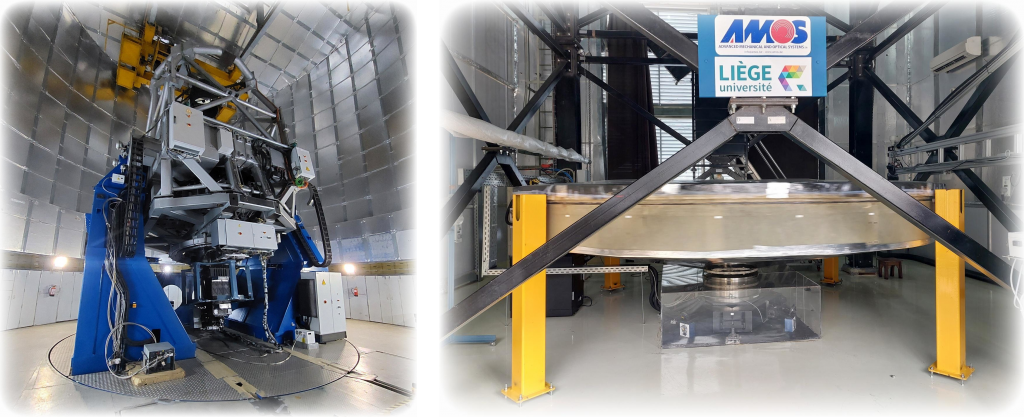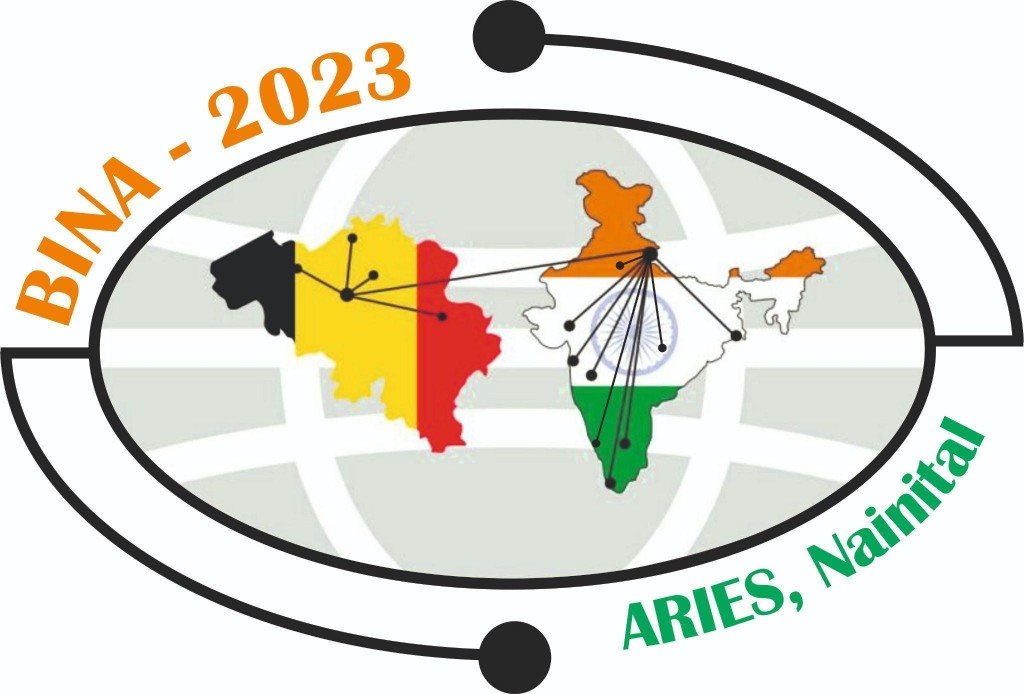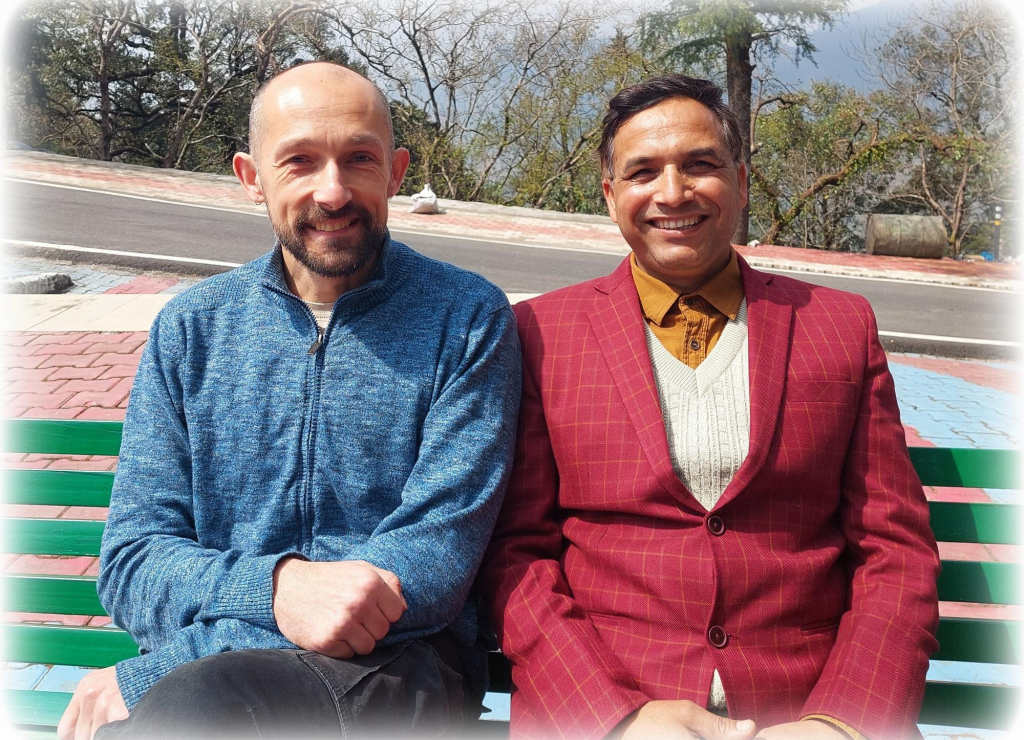Belgian and Indian astronomers celebrated their successful collaboration during their third workshop
After almost 9 years of existence, the Belgo-Indian Network for Astronomy and astrophysics (BINA) celebrated a new milestone with the inauguration of the ILMT (International Liquid Mirror Telescope), located at the Devasthal Observatory in the north of India on 21 March 2023. This event was followed by the third BINA workshop on 22–24 March 2023, in Bhimtal, India. Several scientists of the Royal Observatory of Belgium (ROB), including Dr Peter De Cat who is the Belgian PI of BINA, are involved since the foundation of this network. This international workshop was an opportunity for BINA members to emphasise the scientific potential of Indo-Belgian co-operations.
The Belgo-Indian Network for Astronomy and astrophysics
BINA is a network that fosters collaborative space research between Belgian and Indian institutes. The initiative for this bilateral collaboration was taken in 2014 by Dr Peter De Cat of the ROB (Belgian PI of BINA) and Dr Santosh Joshi of the Aryabhatta Research Institute of Observational Sciences (ARIES; Indian PI of BINA) (see Figure 1). The stimulus for this project can be found in the Devasthal Observatory of ARIES, Nainital, Uttarakhand, which hosts two Indo-Belgian telescopes: the 3.6-m Devasthal Optical Telescope (DOT) and the recently inaugurated 4-m International Liquid Mirror Telescope (ILMT) (see Figure 2). They are called ‘Indo-Belgian’ because they are located in India but were built by the Advanced Mechanical and Optical Systems (AMOS) and the Centre Spatial de Liège (CSL) in Belgium. The initial aim of BINA was to make optimal use of these Indo-Belgian telescopes, from sharing expertise in the development of the back-end instruments to the joint scientific exploitation of their observations.

Figure 2: The 3.6-m Devasthal Optical Telescope (left) has a conventional glass mirror while the 4-m International Liquid Mirror Telescope (right) is a zenithal telescope having a mirror consisting of a thin layer of liquid mercury.
‘Belgium has gained a lot of expertise with the development of sophisticated back-end instruments for the Mercator telescope at La Palma, Canary Islands, Spain. By joining our forces, it will be easier to equip the DOT with similar instruments of the same quality. As the DOT is much bigger, it would allow us to extend our ongoing projects to fainter objects and pursue new science objectives,’ explains Peter De Cat. BINA unites 14 Indian and 7 Belgian partner institutes (see Figure 3), becoming a well-established concept within the astronomical communities of both countries.

Figure 3: The logo for the 3rd BINA workshop. The large dots on the maps of Belgium and India represent the location of the PI institutes. They are connected with each other, symbolising bilateral collaboration, and with smaller dots, representing the other partner institutes.
Network Activities
Since 2014, the Belgian Science Policy Office (BELSPO; federal authority of Belgium) and the International Division, Department of Science & Technology (DST; federal authority India) are continuously supporting BINA by providing funding for work visits (in both directions) and the organisation of workshops. By now, three BINA workshops have taken place. The first workshop, ‘Instrumentation and Science with the 3.6-m DOT and 4.0-m ILMT’, was hosted by ARIES in 2016 in Nainital (India). ‘It was the first time Peter De Cat and I met in person,’ remembers Santosh Joshi. During this workshop, the focus was on the introduction of ongoing projects in both countries and the first-generation back-end instruments for DOT. ‘It allowed us to find synergies between our scientific interests and to discuss new initiatives based on upcoming data of the Indo-Belgian telescopes,’ Santosh Joshi continues.
The second workshop, ‘BINA as an expanding international collaboration’, was hosted by the ROB in 2018 in Brussels (Belgium). The first results obtained with the observations from DOT were presented. ‘We realised that the Indo-Belgian collaboration can go much beyond the joint exploitation of the Indo-Belgian telescopes and makes it possible to use other existing observational facilities accessible through the partner institutes. This is a win-win opportunity for the astronomical communities of both countries,’ says Peter De Cat.
Extending the scientific scope of the collaboration
Having received the first light in April 2022, the ILMT was inaugurated on 21 March 2023, an event attended by several scientists of the ROB. Dr Ronald Van der Linden, General Director of the ROB, assisted in the inauguration as representative of our institute. The scientific exploitation of ILMT will start soon, resuming the Indo-Belgian collaboration at full capacity. The third BINA workshop, ‘Scientific Potential of the Indo-Belgian cooperation’, took place at the Bhimtal Campus of the Graphic Era Hill University on 22–24 March 2023 and was hosted by ARIES. ‘Initially, the focus of BINA was on observational astronomy with the Indo-Belgian telescopes. But now we consider BINA as a tool to stimulate all types of scientific collaborations in space sciences between Belgian and Indian colleagues,’ says Peter De Cat. This is reflected in the scientific programme of the workshop that was devoted to the physics of a wealth of objects (solar system objects, exoplanets, binaries, clusters, star-forming regions, massive stars, compact objects, transients, and extragalactic objects) and different aspects of the Sun.
As an additional part of the workshop, 14 popular talks by BINA participants were organised for young students in nearby schools, colleges and universities. ‘As scientists, it is our responsibility to explain to students and the general public what we do. This is the reason why we added a dedicated programme filled with outreach activities,’ adds Santosh Joshi.
The BINA collaboration has strengthened the Indo-Belgian observational facilities in India with the completion of the 3.6-m DOT and 4-m ILMT, the largest-sized optical telescopes in India. ‘The output of this collaboration has been commendable in terms of both scientific publications and manpower training for the next generation. It should be strongly encouraged in future as the necessary groundwork has been prepared during the last decade, particularly after the formation of BINA in 2014,’ asserted Prof. Ram Sagar, former director of ARIES.



